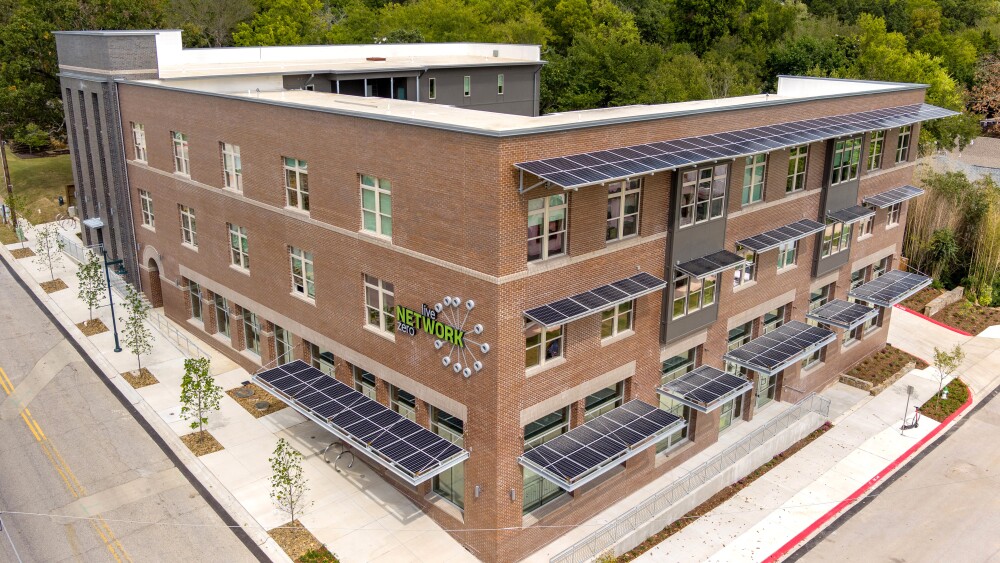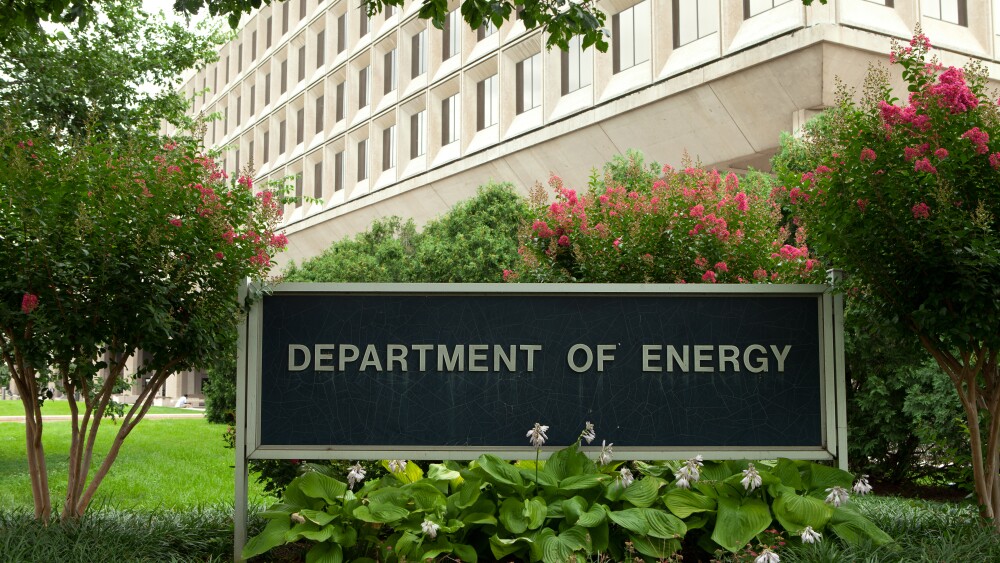The focus on net zero in real estate has risen dramatically in the past several years, but the lack of consensus on what net zero means in practice has been a barrier to progress. Many organizations and standards-setting bodies have released their own definitions, which may differ from each other or from broader public understanding, and a variety of terms have proliferated along the way, leading to confusion and potential greenwashing among investors, occupants, and within real estate firms.
“The National Definition of a Zero Emissions Building will support the sector as it advances innovative solutions essential to creating resilient communities and high-quality jobs,” said U.S. Secretary of Energy Jennifer M. Granholm in a press release. “With today’s announcement, DOE is helping bring clarity to our public and private sector partners to support decarbonization efforts and drive investment—paving the way for the cutting-edge, clean energy technologies we need to make America’s buildings more comfortable and affordable.”
The new national definition hopes to cut through this cloud of uncertainty and provide a standardized, verifiable set of minimum criteria for defining a zero emissions building. To meet the definition, a building must be:
- Highly energy-efficient: For existing buildings, energy performance must place it in the top 25 percent of the most efficient buildings in the market with a similar use (i.e., an ENERGY STAR score of 75 or higher, using actual measured whole-building energy data). For new buildings, estimated whole-building energy use must be at least 10 percent lower than the latest model code, and the building must be designed to achieve energy performance in the top 10 percent of similar buildings (i.e., an ENERGY STAR score of 90 or higher).
- Free of on-site emissions from energy use: The building’s direct GHG emissions from energy use must equal zero, meaning no on-site combustion from natural gas or oil (i.e., the building must be all-electric).
- Powered solely from clean energy: All the building’s energy must come from carbon-free sources, which can include on-site and off-site sources, including market instruments such as renewable energy certificates under certain conditions.
Notably, carbon offsets are not allowed. The aim of the new definition is to focus attention squarely on lowering building emissions, electrifying all building equipment, and procuring clean energy to power it. It also seeks to avoid controversies about the verifiability of carbon offset claims that have disturbed the market in the past year. The definition also does not account for emissions from embodied carbon (from constructing the building) or emissions from refrigerant chemicals, the global warming potential of which can be far higher than energy-related GHG emissions.

The NetWork Building by Entegrity Energy Partners in Fayetteville, Arkansas. NetWork combines Entegrity’s new office building with 28 market-rate apartments to form a three-story mixed-use development. By using simple design and off-the-shelf technologies, Entegrity was able to enhance the building’s efficiency while keeping costs down, and achieved net zero energy through thoughtful passive design and on-site solar panels. ULI Knowledge Finder: Entegrity Energy Partners’ Network Building
“As a building owner and operator with a longstanding commitment to sustainability, Kilroy welcomes efforts to create a standardized definition of zero emissions buildings,” said Sarah King, senior vice president of sustainability at Kilroy Realty. “A clear, widely-accepted definition will help building owners more effectively communicate with tenants and other stakeholders about the sustainability performance of individual buildings.”
The DOE announcement reinforces ULI’s commitment to supporting real estate’s transition to net zero, both as a Mission Priority that drives work across the organization and through ULI Greenprint Community’s Net Zero by 2050 Goal. More than 34 real estate members of the Community, which numbers more than 130 companies in total, have aligned to this goal, indicating a leading commitment to decarbonization.
“The Urban Land Institute is pleased to see the federal government’s leadership in encouraging and accelerating the building sector’s journey to net zero,” remarked Marta Schantz, co-executive director of the ULI Randall Lewis Center for Sustainability in Real Estate. “Buildings that meet the new national zero emissions definition will also align with Track 1 and Track 2 of the ULI Greenprint Net Zero by 2050 Goal.”
The new national definition is strikingly similar to the ULI Greenprint definition of a net zero building: “highly energy efficient, and fully powered by on-site and off-site renewables, and offsets to aid the transition to total sector decarbonization where necessary.” Companies aligning with the national definition will also be in alignment with the second and third tracks of the ULI Greenprint Net Zero by 2050 Goal.
The recently expanded Net Zero by 2050 Goal now includes three tracks, which lay out which spaces and types of carbon are included in the bounds of responsibility: i.e., whether the space is landlord-controlled only or landlord- and tenant-controlled, and whether the carbon is embodied in the structure or operational from running the building.
Although numerous other net zero commitments remain in use, the new national definition is already sending a strong market signal on the importance of decarbonization, and other industry organizations besides ULI are responding to the call for consistency. For example, the U.S. Green Building Council has announced that the newest version of its LEED (Leadership in Energy and Environmental Design) certification, the world’s most widely used green building rating system, will incorporate the national definition of a zero emissions building. Green Building Initiative’s Green Globes certification will also likely incorporate this definition, and other organizations may follow suit.
The shifting emphasis to decarbonization may help bring the wider buildings and real estate market into the journey toward net zero as a clear, achievable goal, which may be able to drive greater market transformation than has thus far been accomplished by existing net zero building programs. Additionally, having a standardized definition may provide greater confidence by investors, lenders, and tenants, each of whom are demonstrating a greater appetite for low-carbon buildings to finance or occupy.
On the policy side, the definition is not currently a regulatory standard, but if it becomes incorporated into policy—and if local governments incentivize compliance with the definition—then grants, tax credits, building performance standards, and other mechanisms may be tied to meeting these criteria, and real estate can prepare to take advantage of these changes.






